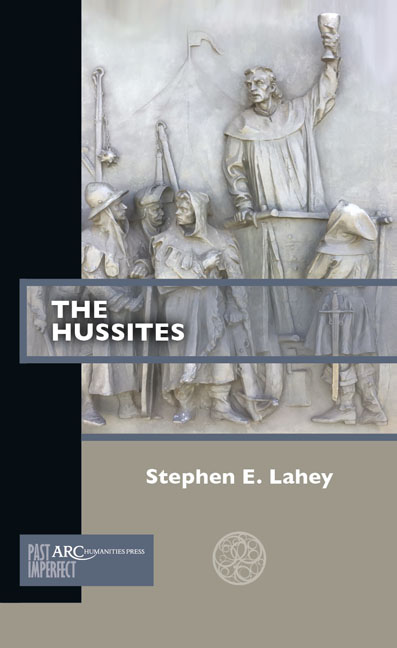Chapter 2 - Hussite History
Published online by Cambridge University Press: 20 November 2020
Summary
This chapter will briefly survey the main events of the Hussite movement in the fifteenth century. This, in itself, is historiographically questionable, because although the fighting largely ended in 1435 at Lipany, the Hussite phenomenon continued to evolve into the Modern period. Complicating matters is the absence of historical narratives in English. The two most reputable accounts, those of Howard Kaminsky and Frederick Heymann, end with the death of Žižka in 1425. So, too, does the Chronicle of Laurence of Březova, the only account of the movement written by a Bohemian. There are much fuller accounts in Czech, of course, and František Šma-hel's three-volume study was translated into German in 2002, but for Anglophones, the only complete overview remains Jiři Kejř's The Hussite Revolution, which was published in Prague in 1988, and is not readily available.
The Hussite movement had its origins in the reign of the emperor Charles IV, who dominated mid-fourteenth-century Europe. Bohemia was situated in the heart of the Holy Roman Empire, which stretched from the Low Countries to Gdańsk, and from the Piedmont to the Adriatic, encompassing what is today Austria, Germany, Switzerland, Croatia, Slovenia, the Netherlands, and the Czech-speaking lands of Bohemia, Moravia, and Silesia. Charles was the son of John the Blind of Luxembourg and Elizabeth of Bohemia, heiress of the Přemyslid dynasty that had once ruled the Czech lands. Though he was named Václav at birth, he took the name Charles to honour the French Charles IV, his uncle, with whom he lived in his youth. He ruled the lands of the Bohemian crown in the 1340s, but until he was elected Holy Roman Emperor in 1355, he was regarded as an insignificant figure in European politics. Charles had prepared a strong political base for himself in Bohemia, and established Prague as a city to rival Vienna with a rigorous expansion program. He built churches, the eponymous bridge spanning the Vltava (Moldau), and a magnificent stronghold just south of the city, Karlstejn, which remains one of Europe's famous castles. Most significantly for this narrative, he founded a university in Prague in 1348 which he intended to put his city on an intellectual par with Paris. His “Golden Bull” of 1356 provided the basis for the secure regulation of the selection of future emperors for the next four centuries.
- Type
- Chapter
- Information
- Hussites , pp. 45 - 82Publisher: Amsterdam University PressPrint publication year: 2019



